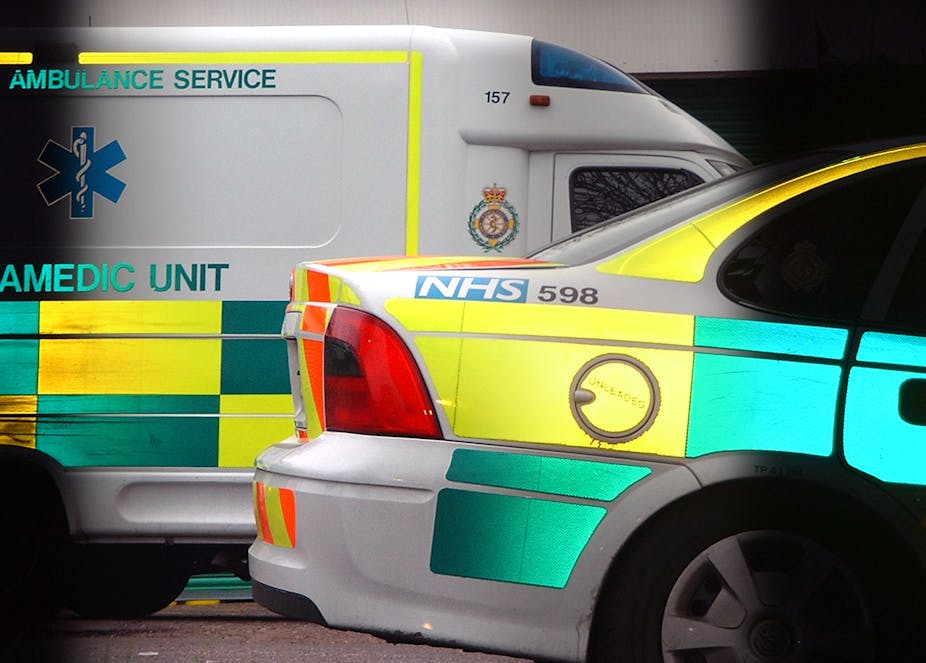With so many lurid reports of violence on our TV screens, it’s easy to think that the police know about all or most incidents. But they don’t. The National Crime Victimisation Survey in the US and the Crime Survey for England and Wales both demonstrate that tens of thousands of crimes go unreported.
This is also obvious when hospital emergency department data is compared with police intelligence.
In repeated comparisons in UK cities that we’ve made, only about a third of violence which put people in emergency departments appear in police records. And police knowledge varies with violence location, victim gender and age. For instance, the chance that violence where young men are injured in nightclubs is reported is very low, which reflects a fear of reprisals, inability to identify attackers and unwillingness to have their own conduct scrutinised.
One of the lessons of police research is how very effective targeted policing can be to cut crime. Police patrols constantly informed by the latest intelligence about where crimes take place are at the right place at the right time to intervene early and deter. This keeps people out of hospital and out of prison.
Gone are the days when police could sensibly stick to the same old places and the same old patrol routes. From our research we now know that the police aren’t told about a whole raft of violence that ends up in emergency departments, and from that we can improve patrols with anonymised information from hospitals about violence at specific street locations, clubs and bars, park locations and schools where violence is taking place. And also weapons used.
And this works. According to a study I conducted with colleagues at the US Centres for Disease prevention and Control into using this approach in Cardiff, Wales, and published in the British Medical Journal, violence causing injury fell 42% compared with 13 similar cities where information from emergency departments was not collected and used. This finding has been confirmed in an independent study in Cambridge. And the economic benefits are massive.
A follow up study published in the Journal Injury Prevention last week showed that for every pound spent on setting up and maintaining the flow of information from emergency rooms, there were £82 of benefits. Over a year, the benefits came to £6.9m (US$11m). With serious violence of course, there were savings for city governments, the police, courts and prisons as well as health services, not to mention the avoidance of the often devastating costs to victims and their families.
This all sounds simple to do, but collecting, analysing and using this unique new intelligence takes good organisation. Emergency room software has to be adjusted to allow hospital staff to enter crucial information. This also needs to be anonymised and shared frequently with local crime analysts who can link this with police intelligence before presenting the complete picture to police commanders and city government executives in a position to act on it.
After the recent DC Navy Yard shootings, the chief emergency doctor in the hospital where victims were taken, Dr Janis Orlowski, voiced her enormous frustration at the continuing toll of gun violence and said she was now moving to a health policy role. Here’s a new way for her and thousands of others in her position to act.
In 2001, Dr Art Kellermann and his colleagues at Emory University in Atlanta, Georgia, in a 2001 study published in the Archives of Emergency Medicine, wrote, “We were surprised to discover that (13%) of medically documented nonfatal shootings could not be matched with a corresponding police report. Several cases involved severe and even multiple gunshot wounds. The problem was not confined to a particular law enforcement agency or hospital.” This information sharing enterprise might well, therefore, contribute to cutting gun violence.
Arrangements in the US both help and potentially get in the way of implementation. In the US, patients are already told that the information they provide may be used for crime reduction purposes. On the other hand, there are many more emergency and police departments in the US than in the UK, which provide a challenge to information sharing and concerted action.
Some hospitals, as happened in Holland, might see injury prevention as a threat to their income; in the UK there are few such financial considerations.
But sharing information provides communities with a low cost, low technology way of making decisions about how to prevent violence, which also has the potential to bring about substantial reductions in harm and costs.

